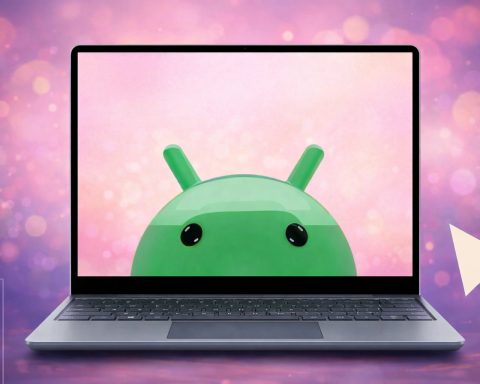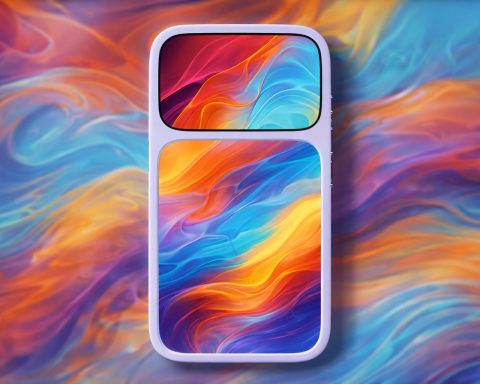- Fresh reports today amplify earlier leaks that Samsung is testing a new “Polar ID” facial authentication stack for the Galaxy S27 Ultra. It’s described as a polarized‑light system tied to a new ISOCELL Vizion front sensor and a “BIO‑Fusion Core” secure enclave. Claimed unlock latency: ~180 ms. [1]
- The feature is said to improve spoof resistance and work in more lighting scenarios — potentially with masks or sunglasses — addressing long‑standing limitations of 2D, camera‑only face unlock on Android. [2]
- Mentions of “Polar ID v1.0” (and in one write‑up v1.9) reportedly appear in early S27 Ultra firmware logs. Publication dates range from Nov 7–10, 2025, with Nov 10 coverage from India and Germany pushing the story into today’s tech cycle. [3]
- Polar ID originates from Metalenz, which publicly confirmed in Feb 2024 that its polarized‑light camera works with Samsung’s ISOCELL Vizion 931 and demoed it at MWC 2024. [4]
What’s new today (Nov 10, 2025)
India’s Techlusive published a morning report reiterating that Samsung’s Galaxy S27 Ultra may debut Polar ID v1.0, a near‑infrared polarized‑light system said to read a person’s unique polarization pattern and target ~180ms unlocks. The piece also repeats claims that the stack combines an ISOCELL Vizion sensor with a new BIO‑Fusion Core enclave and should perform more reliably in darkness, bright sun, and with sunglasses or masks. [5]
German outlet GIGA followed with a same‑day brief contextualizing Polar ID as Samsung’s best shot yet at a Face ID‑class solution, noting the Metalenz origin and the long‑running effort to miniaturize the hardware for phones. [6]
These posts build on weekend coverage from Android Central (Nov 8), PhoneArena (Nov 7), SamMobile (Nov 7), Digital Trends (Nov 8), and others, all pointing to firmware strings referencing “Polar ID” for the S27 Ultra and promising faster, more secure facial unlock than Samsung’s current 2D approach. [7]
What is Polar ID — and why it matters
Polar ID is an imaging approach from Metalenz that senses the full polarization state of light using metasurface optics. Earlier public announcements named Samsung’s ISOCELL Vizion 931 as the light engine and showed smartphone reference designs at MWC 2024. In theory, the extra polarization information creates a “polarization signature” of a human face that’s hard to spoof — even with high‑quality masks — while enabling smaller modules than traditional structured‑light arrays. [8]
For Galaxy users, this could be the first time since the short‑lived iris scanners that Samsung ships a hardware‑backed face unlock robust enough for payments and banking without falling back to fingerprints. Today’s reports specifically highlight anti‑spoofing gains and low‑light reliability. [9]
How it compares to Apple Face ID
Apple’s Face ID relies on structured infrared light (a dot projector + IR camera) to build a 3D depth map, which is why iPhones still reserve front‑panel real estate for the module. Most Android phones instead use a 2D selfie camera for convenience — fast but less secure, and often not accepted for payments. If Polar ID lands as described, Samsung could offer Face ID‑level security without bulky IR hardware, potentially shrinking the footprint while upping security. [10]
The rumor trail — and a reality check
- Firmware breadcrumbs: Multiple outlets cite early S27 Ultra firmware referencing “Polar ID” in the biometric security framework, along with a BIO‑Fusion Core secure enclave. Android Central and Digital Trends mention v1.0; Android Headlines cites v1.9 — suggesting internal iteration rather than a final marketing name. [11]
- Performance target:~180 ms unlock latency is repeatedly claimed. As always, pre‑release numbers can change. [12]
- Source quality: Both SamMobile and Notebookcheck caution that the originating leaker’s track record is mixed; treat specifics with healthy skepticism until Samsung confirms. [13]
Timeline: When could you actually use this?
- Galaxy S26: Expected in February 2026 and unlikely to carry Polar ID based on current chatter. Today’s articles position S27 Ultra (early 2027) as the more realistic landing spot. [14]
- Tech readiness: Metalenz said commercial implementations of its polarization camera stack were on the near‑term horizon after MWC 2024, and it publicly named Samsung’s ISOCELL Vizion 931 as the sensor partner. That makes a 2027 debut plausible — but not guaranteed. [15]
What Polar ID could change for Galaxy users
- Payments & banking: Hardware‑backed face unlock could become payment‑grade on Samsung phones — something many Android devices still lack. [16]
- Reliability: Claims point to better performance with glasses, masks, and in harsh lighting, addressing daily‑use pain points. [17]
- Design flexibility: If polarized‑light imaging really reduces module size, Samsung could avoid the large notches/islands historically needed for 3D arrays. [18]
Today’s coverage (Nov 10) at a glance
- Techlusive (India): Recaps Polar ID v1.0, NIR polarized light, ISOCELL Vizion, BIO‑Fusion Core, ~180ms, and claims about working with masks and sunglasses. [19]
- GIGA (Germany): Frames Polar ID as Samsung’s long‑sought Face ID alternative and references prior reporting on the leaker’s mixed reliability. [20]
(Background pieces from Android Central, PhoneArena, SamMobile, Digital Trends, Gizmochina, and Android Headlines laid the groundwork across Nov 7–9.) [21]
FAQ
Is Polar ID confirmed for the Galaxy S27 Ultra?
No. All reporting so far is based on leaked firmware references and industry context. Samsung hasn’t confirmed the feature. [22]
What’s the difference between Polar ID and Face ID?
Face ID projects structured IR dots to build a 3D map; Polar ID analyzes the polarization of reflected light to form a unique facial signature, potentially shrinking hardware while improving anti‑spoofing. [23]
Will it work with sunglasses or masks?
That’s a claim in today’s and prior reports, not an official spec. Early write‑ups say the system aims to work across lighting and with masks/sunglasses, but we’ll need real‑world testing to verify. [24]
When will the S27 Ultra launch?
Historically, Samsung’s S‑series flagships arrive in Q1. Reporting positions S27 Ultra in early 2027, with S26 expected first in Feb 2026. [25]
Sources & further reading
- Techlusive (Nov 10, 2025): overview of Polar ID v1.0, NIR polarization, ISOCELL Vizion, BIO‑Fusion Core, ~180ms, masks/sunglasses. [26]
- GIGA (Nov 10, 2025): context on Polar ID as Face ID alternative; background cautions. [27]
- Android Central (Nov 8, 2025): first round‑up pointing to “Polar ID v1.0” and ISOCELL Vizion hints. [28]
- PhoneArena (Nov 7, 2025): Polar ID background, Metalenz partnership with Qualcomm and ISOCELL Vizion 931 history. [29]
- SamMobile (Nov 7, 2025): Polar ID rumor, BIO‑Fusion Core, ~180 ms, leaker reliability caution. [30]
- Digital Trends (Nov 8, 2025): Polar ID v1.0, BIO‑Fusion Core, reliability claims. [31]
- Metalenz (Feb 26, 2024): confirms ISOCELL Vizion 931 as Polar ID’s image sensor and MWC 2024 demo. [32]
References
1. www.techlusive.in, 2. www.sammobile.com, 3. www.phonearena.com, 4. metalenz.com, 5. www.techlusive.in, 6. www.giga.de, 7. www.androidcentral.com, 8. metalenz.com, 9. www.phonearena.com, 10. www.phonearena.com, 11. www.androidcentral.com, 12. www.phonearena.com, 13. www.sammobile.com, 14. www.androidcentral.com, 15. www.globenewswire.com, 16. www.phonearena.com, 17. www.sammobile.com, 18. www.phonearena.com, 19. www.techlusive.in, 20. www.giga.de, 21. www.androidcentral.com, 22. www.sammobile.com, 23. www.phonearena.com, 24. www.sammobile.com, 25. www.androidcentral.com, 26. www.techlusive.in, 27. www.giga.de, 28. www.androidcentral.com, 29. www.phonearena.com, 30. www.sammobile.com, 31. www.digitaltrends.com, 32. metalenz.com



